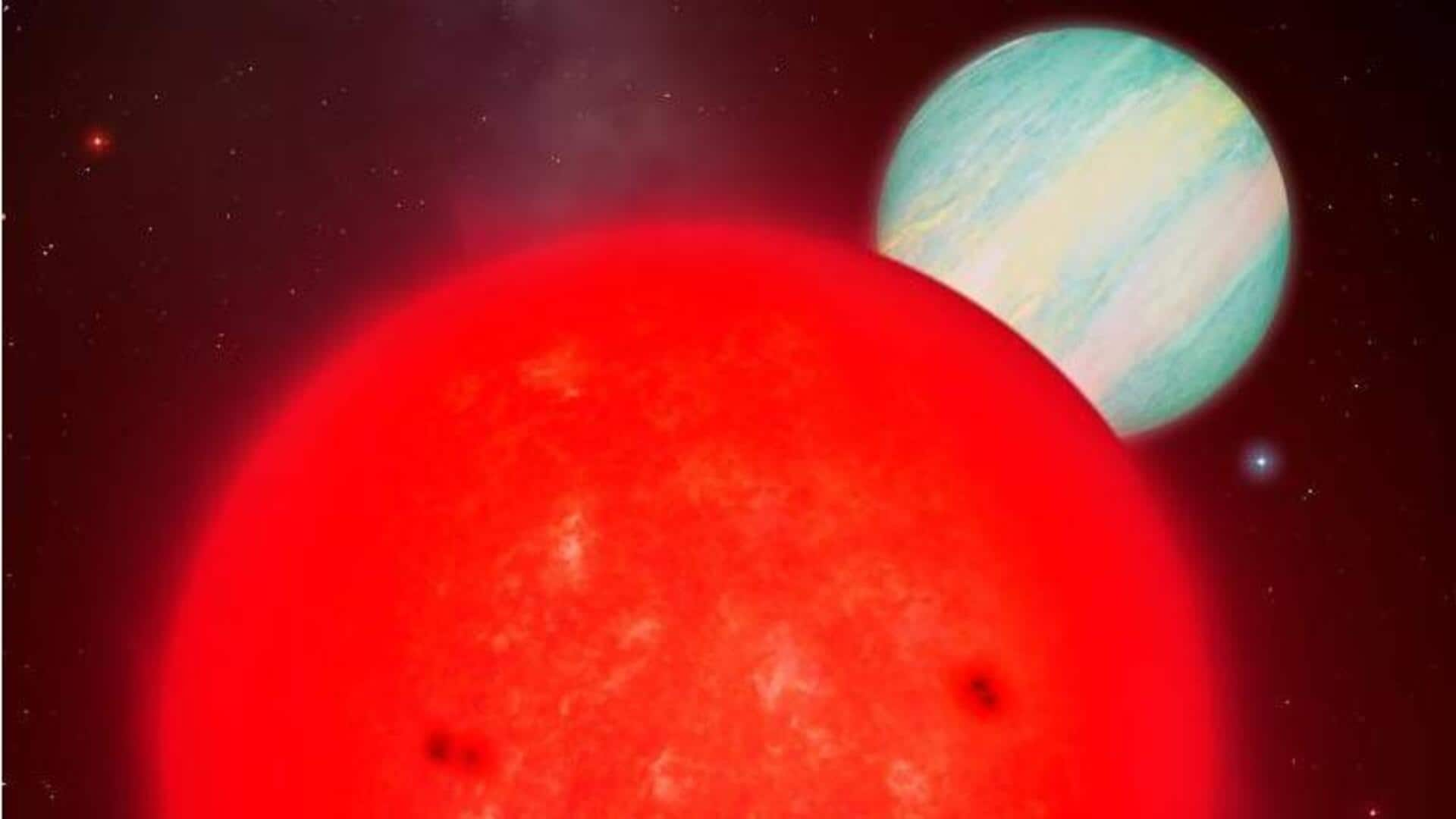
This gas giant challenges our theories of planet formation
What's the story
Astronomers have discovered a gas giant, TOI-6894b, orbiting an incredibly small red dwarf star, TOI-6894. This challenges existing theories of planet formation and raises questions about how such a large planet could form around such a small star. The study was led by Dr. Edward Bryant from the University of Warwick and published in Nature Astronomy journal.
Profile
How was TOI-6894b found?
TOI-6894b is a low-density gas giant with a radius slightly larger than Saturn's but only half its mass. The discovery was made during a survey of Transiting Exoplanet Survey Satellite (TESS) data for giant planets around low-mass stars. Dr. Bryant said he was excited by the find as they didn't expect such planets to form around stars with such low mass.
Formation debate
Discovery challenges core accretion theory
The discovery of TOI-6894b challenges the core accretion theory, which suggests gas giants are hard to form around low-mass stars due to insufficient gas and dust in their protoplanetary disks. Dr. Vincent Van Eylen from University College London's Mullard Space Science Laboratory said it's intriguing how a star with so little mass can form such a huge planet. This discovery could help refine models of solar system formation.
Future studies
JWST to observe TOI-6894b's atmosphere next year
A detailed atmospheric analysis could provide insights into TOI-6894b's formation. By studying the planet's material distribution, astronomers can determine its core size and structure, which may indicate whether it formed through accretion or an unstable disk. The atmosphere of TOI-6894b shall be observed by the James Webb Space Telescope next year, possibly shedding light on its unexpected formation process.